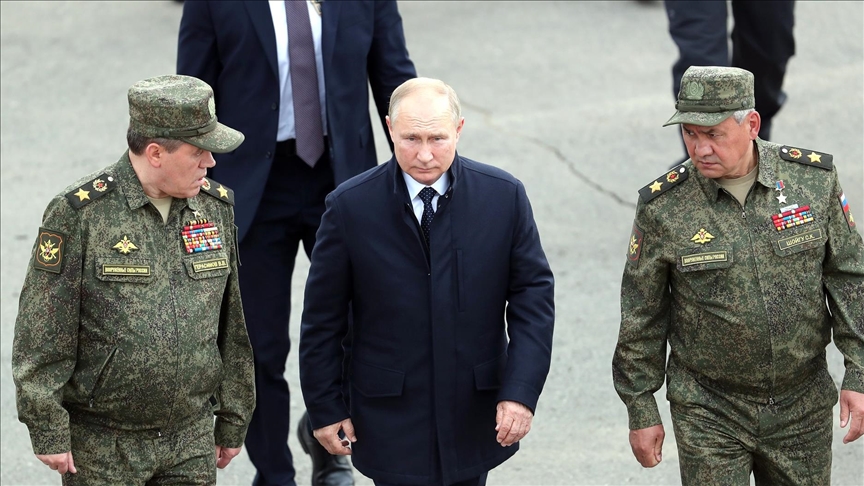The European Union has come to the stark realisation that it stands alone within NATO. The Euro-Atlantic alliance has been abandoned to such an extent that Trump has bluntly declared Europe should not expect even a single bullet in its defence without credibility. Since the victory of the 47th president, the EU has been scrambling, preparing for the worst in case Putin decides to launch an attack. The Baltic states are particularly anxious, aware of their vulnerability. Yet, in their desperate efforts to strengthen the EU’s position, they risk provoking Moscow even further.
Their moves to bolster security may end up angering Russia, potentially escalating tensions rather than calming them. Europe’s strategic dilemma is now clear: act too little and risk exposure, act too much and risk igniting the very confrontation they hope to avoid. Oh God, what a catch-22 situation.
In a bold move to strengthen European defence, Estonia announced plans on 25 April 2025 to build a state-owned military explosives factory near Pärnu. The facility, operated by Hexest AS, aims to produce 600 tonnes of RDX explosives annually — enough to manufacture up to 100,000 NATO-standard 155mm artillery shells each year. This decision comes as Europe races to secure self-sufficiency in defence production, particularly after U.S. President Donald Trump signalled a significant reduction in American military aid to Europe and Ukraine. Estonia’s initiative reflects a growing urgency among European nations to prepare for future conflicts without heavy reliance on Washington.
Estonia focus on RDX
RDX, a powerful and stable explosive developed during World War II, remains a critical component in modern artillery shells, mortars, and missile warheads. Estonia’s new facility will use domestic oil shale as a raw material, helping to reduce Europe’s dependence on imports from countries like China and India. The move is seen as vital for a continent still catching up after decades of underinvestment in defence. Since Russia’s invasion of Ukraine, demand for 155mm shells has surged, with Ukrainian forces reportedly firing up to 200,000 rounds per month.
While larger manufacturers like Germany’s Rheinmetall are ramping up production, Estonia’s factory is notable for its agility and ambition. With a population of just 1.3 million, Estonia has consistently met NATO’s 2 percent defence spending target and ranks among the highest in military aid to Ukraine per capita. Set to begin operations by 2028, Estonia’s explosives plant could significantly bolster Europe’s strategic independence at a time when geopolitical uncertainties demand urgent action.
For the unaware, Estonia has been significantly accelerating its defence posture since 2022. Responding to heightened security concerns, Estonia approved a substantial increase in its defence budget in April 2025, raising spending to 5.4 percent of GDP — one of the highest in NATO. The country has also embarked on enhancing its military infrastructure, notably constructing a new military base near its border with Russia — the first such development since the Soviet era. This base forms part of broader efforts to fortify the nation’s eastern frontier and improve rapid deployment capabilities.
Furthermore, Estonia has been proactive in modernising its military equipment. In 2023, it signed a €1 billion agreement with Germany to acquire the IRIS-T medium-range air defence system, significantly boosting its aerial defence capabilities. These initiatives underscore Estonia’s commitment to strengthening its defences amid an increasingly tense regional environment.
However, Russia has not remained silent. Although there has been no official statement from President Vladimir Putin directly addressing Estonia’s RDX factory plans, past Kremlin reactions offer clues. Moscow has previously voiced strong objections to NATO’s military activities near its borders, describing them as aggressive and warning of countermeasures.
Putin’s eye on Baltics
It would not be surprising if Estonia’s growing military assertiveness eventually draws a sharper response from Russia.
As observers closely monitor the situation, it remains to be seen whether Moscow will escalate rhetoric or take tangible actions against Estonia’s latest moves. One thing is clear: by taking its security into its own hands, Estonia has made itself a bigger target in Putin’s crosshairs. In its bid to shield itself and strengthen Europe’s defence, Estonia may have unintentionally stepped closer to the very storm it hopes to withstand.
The road ahead for the Baltic states — and Europe at large — now seems even more precarious. A game of nerves has begun, and there is no turning back.








